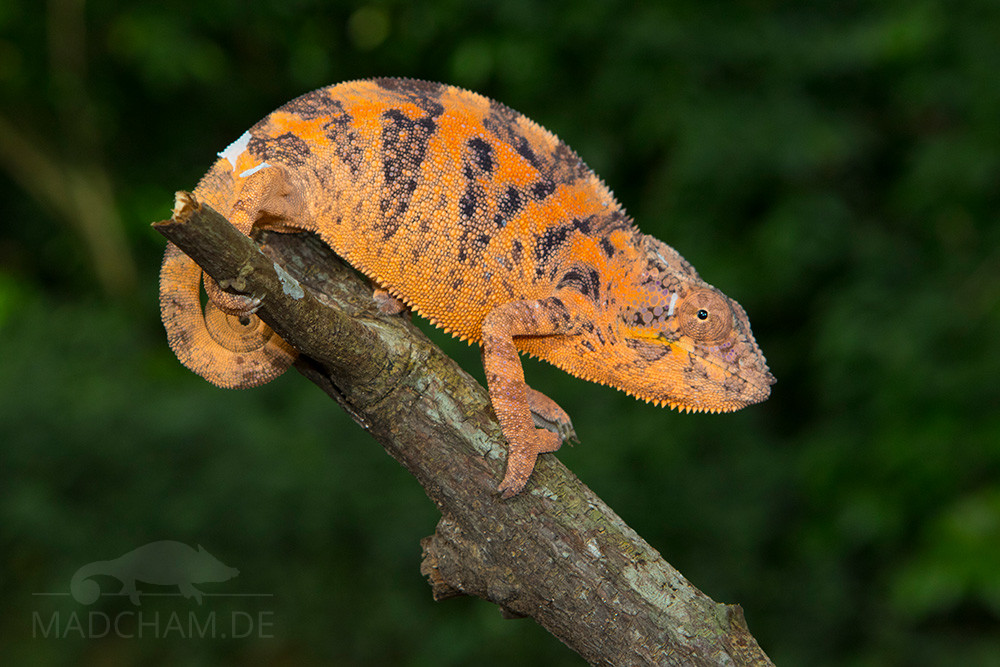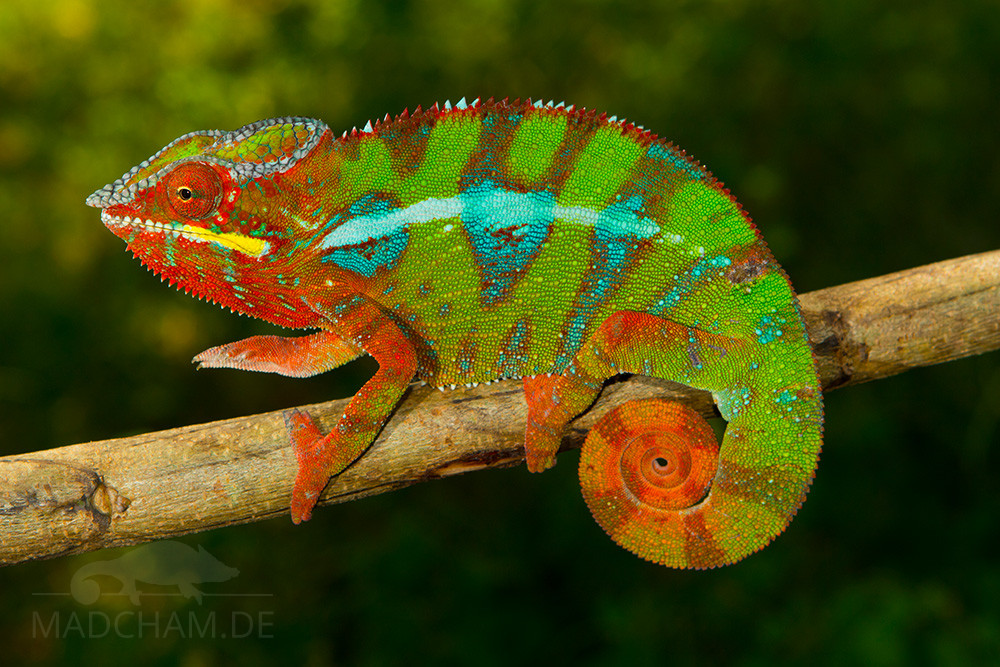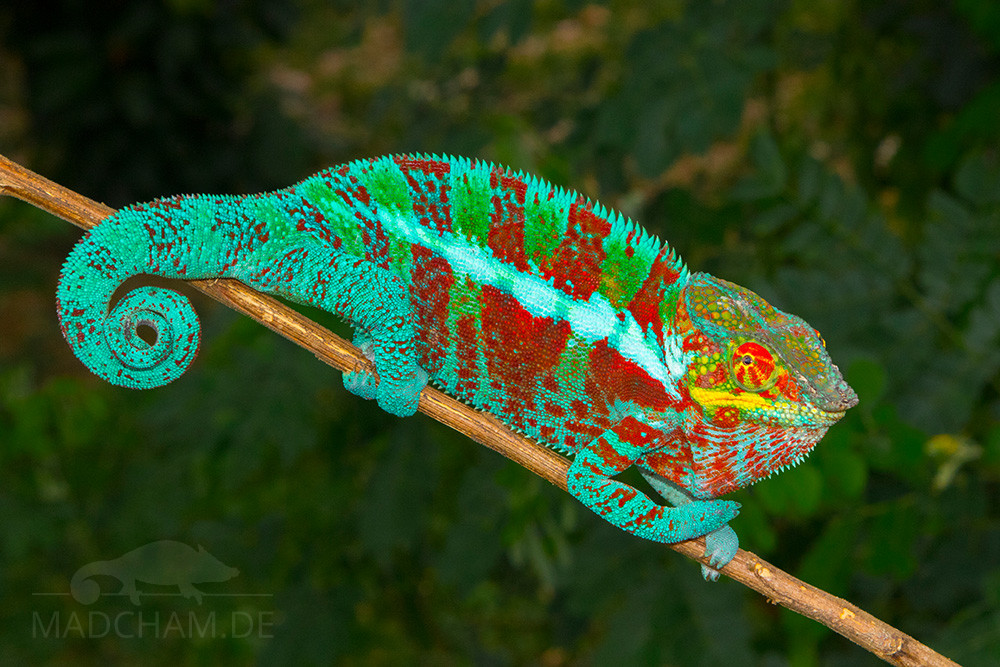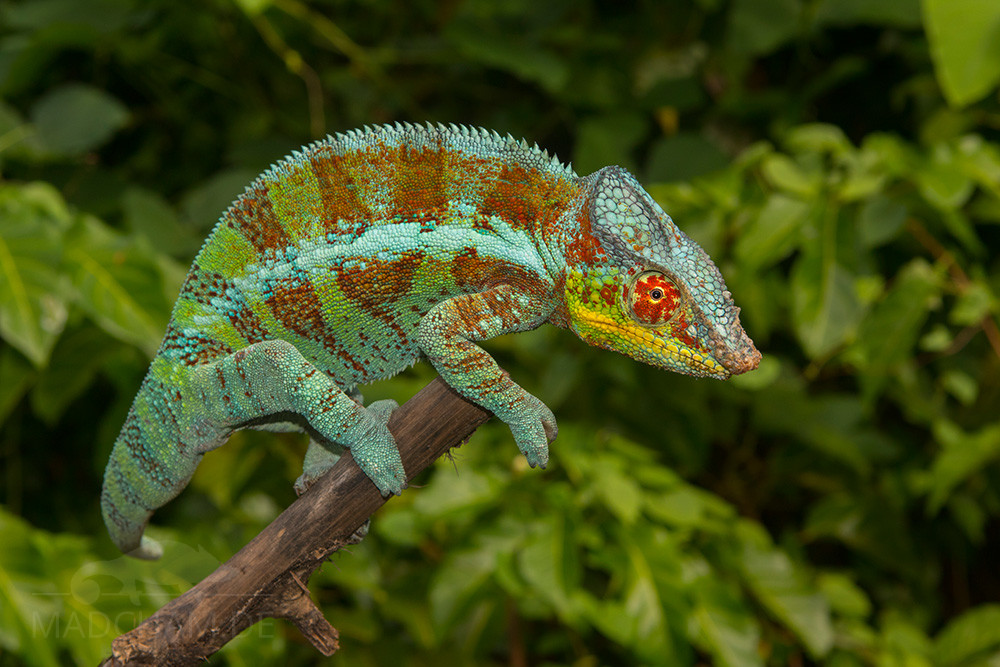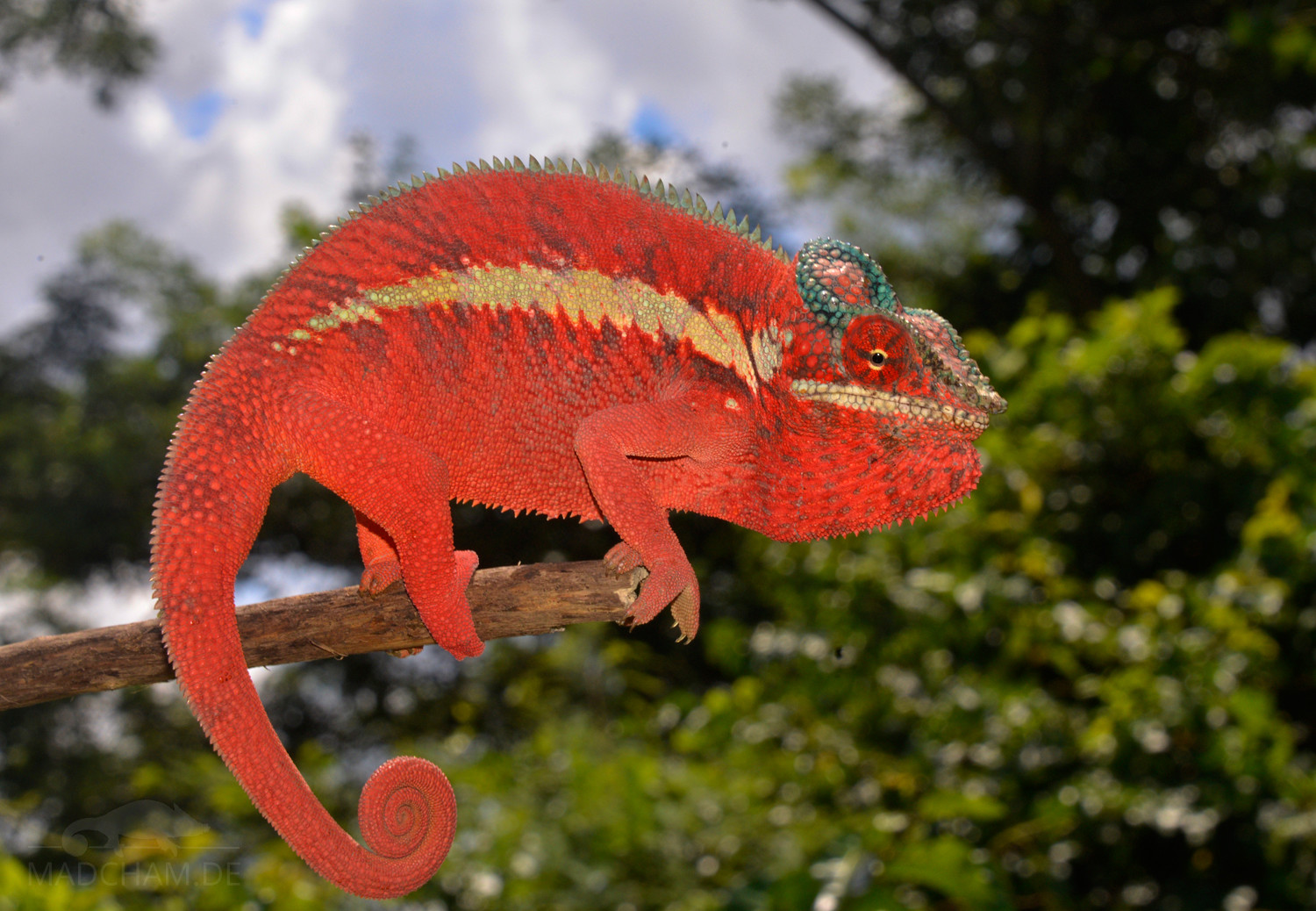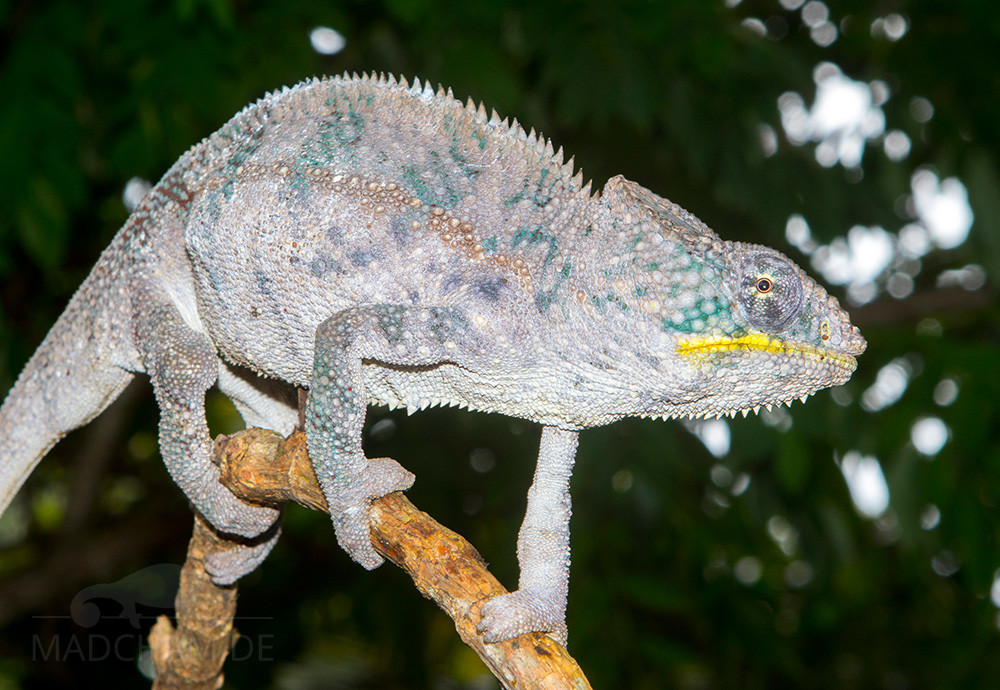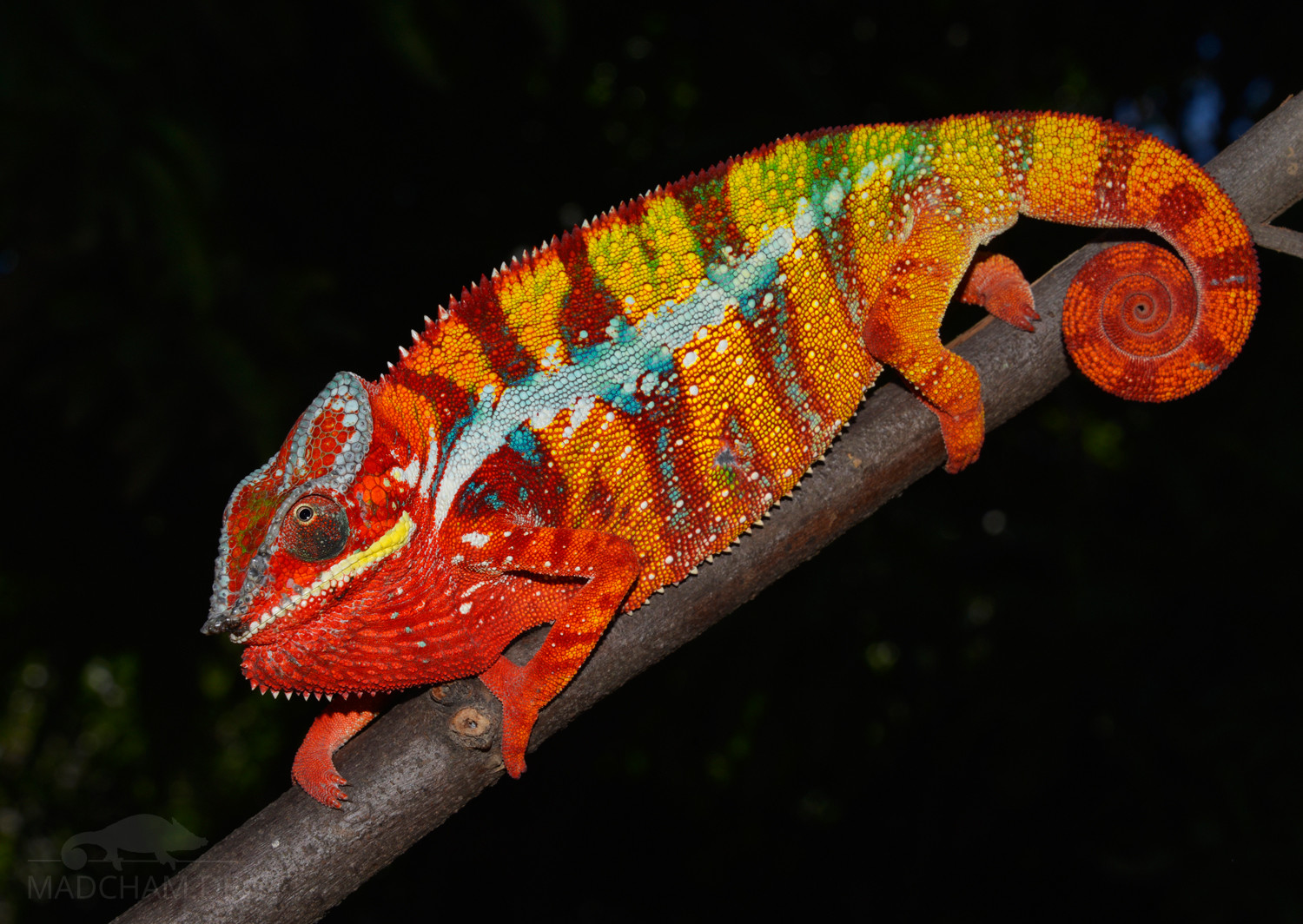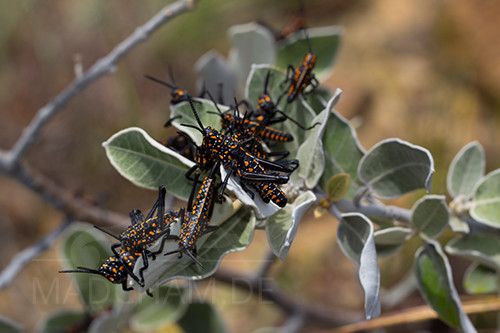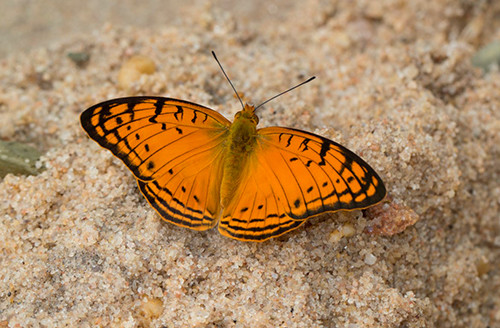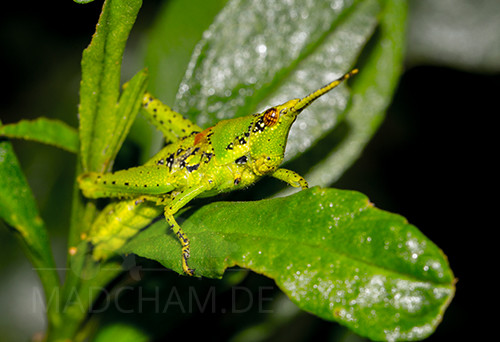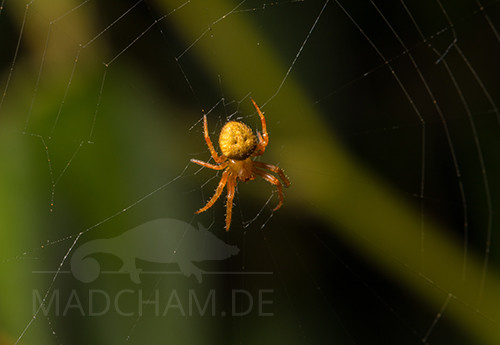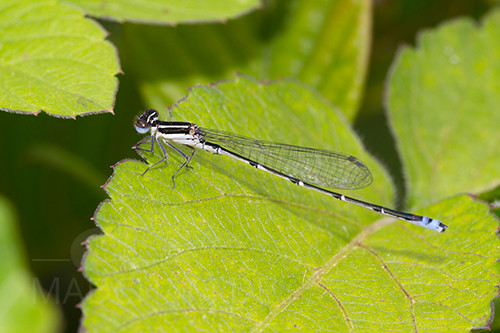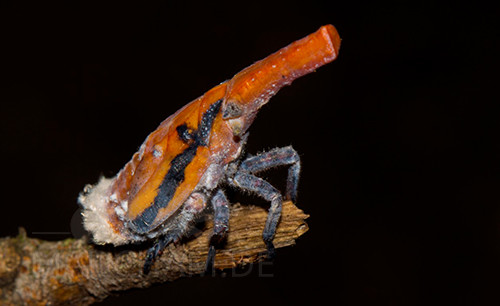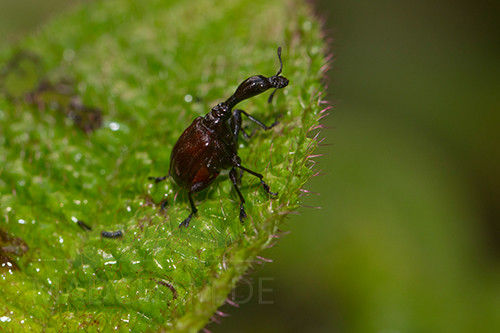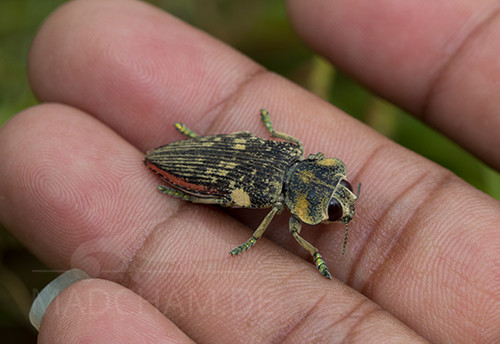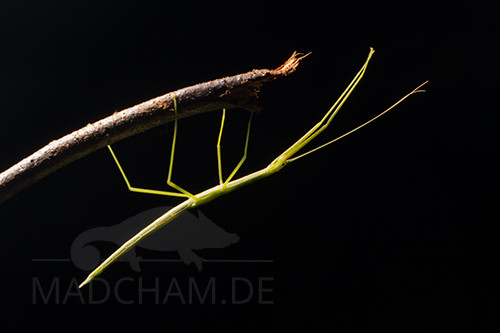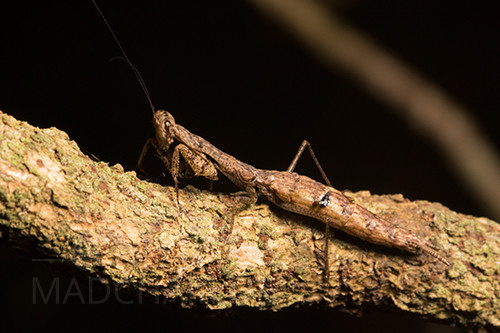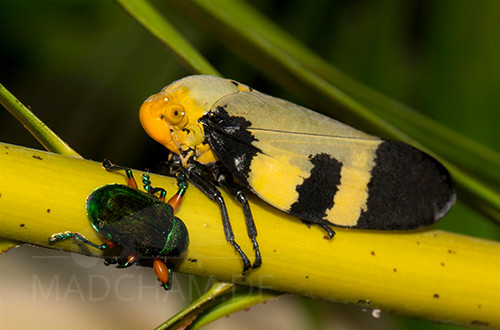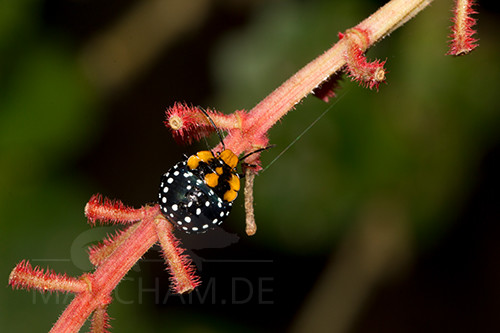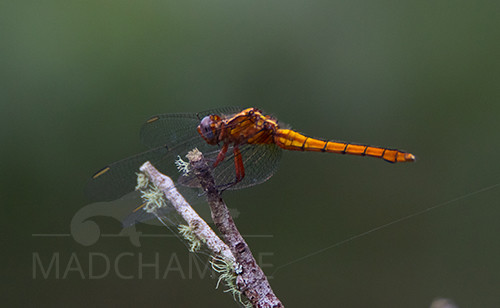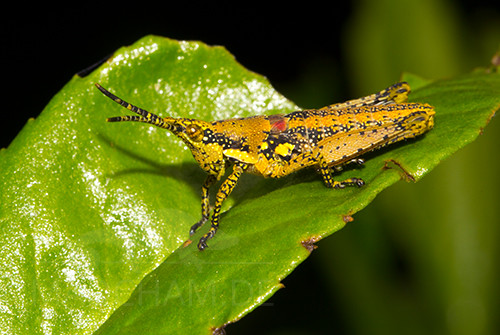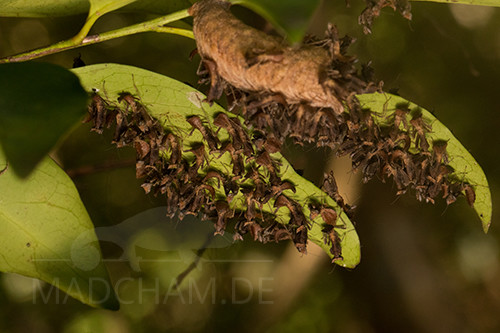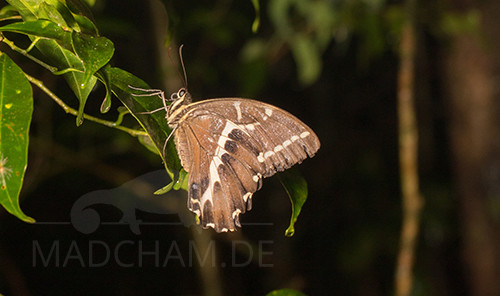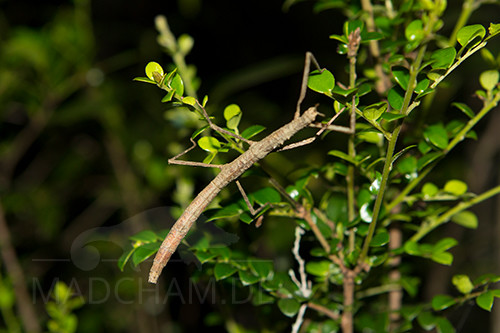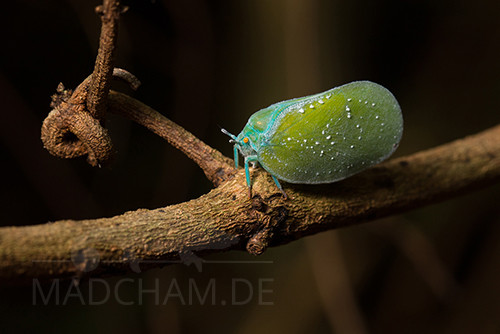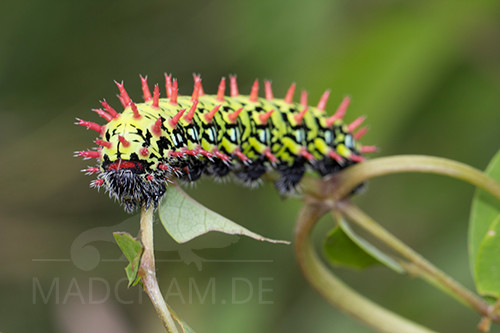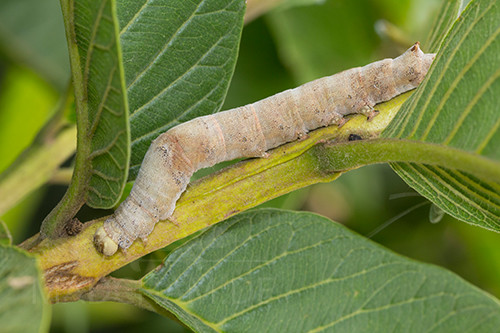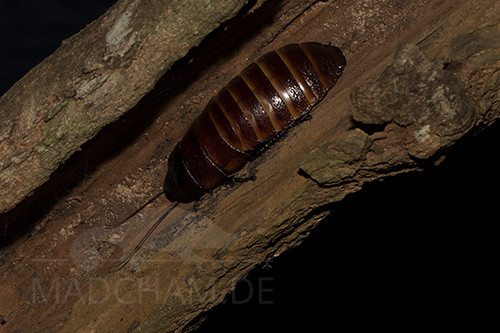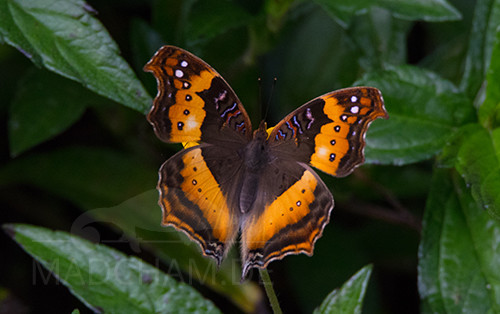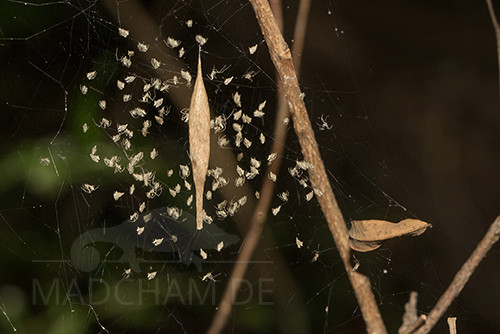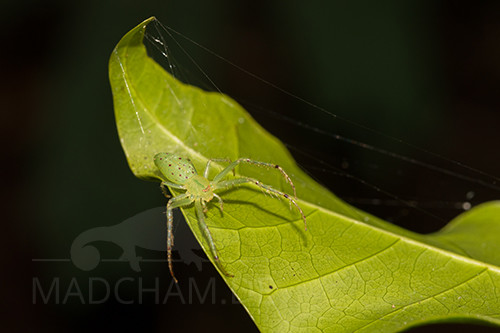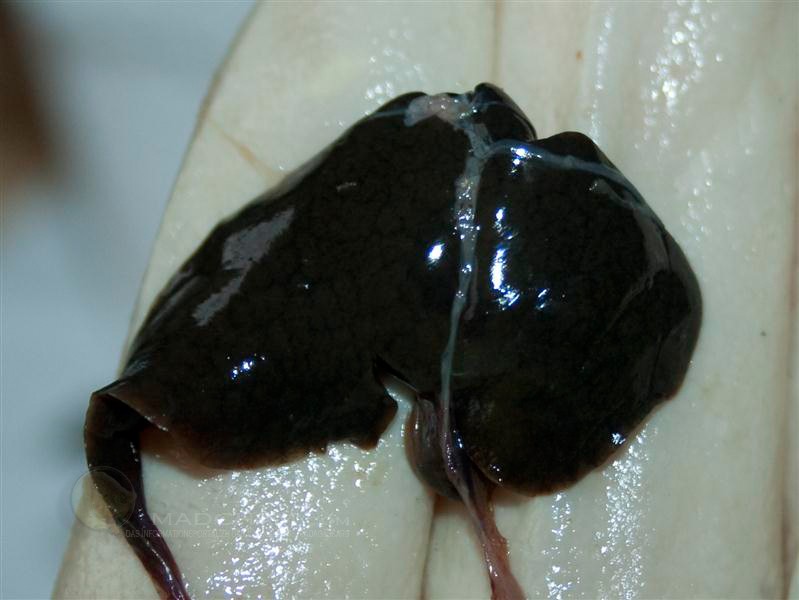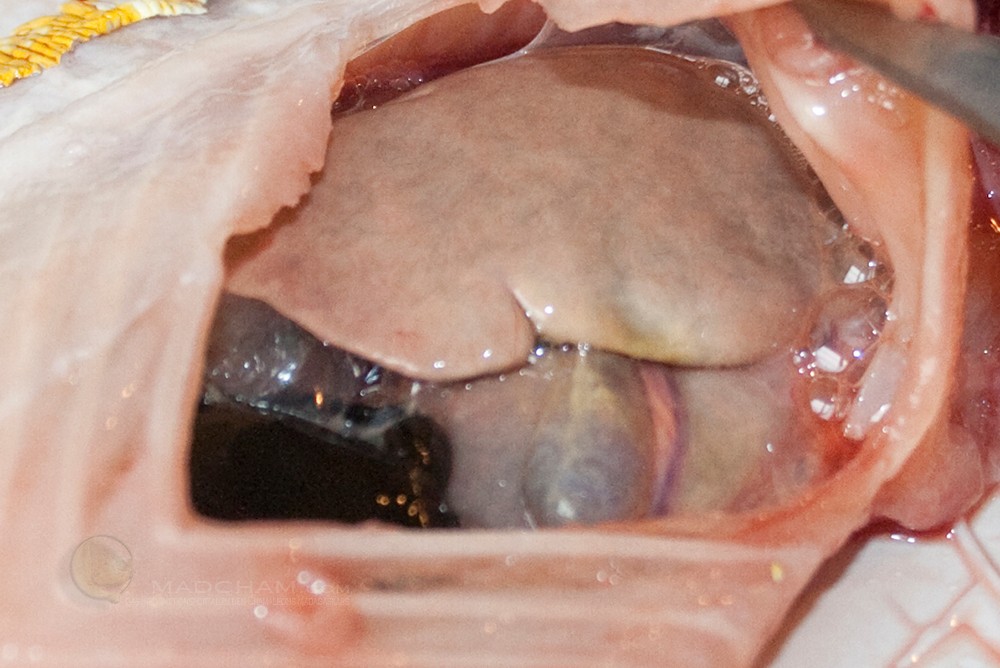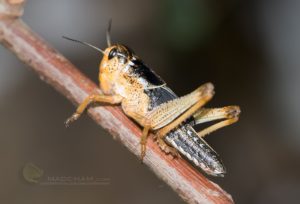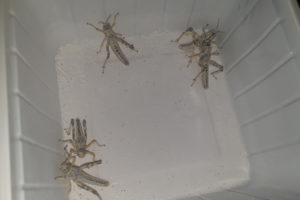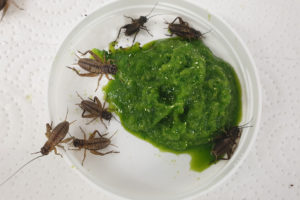In general: feeding with restraint is good for almost every chameleon. Many chameleons in human hands are heavily overfed, which is very detrimental to health and leads to premature death. This article will explain why this is the case and why it is better not to feed your chameleon too fat.
Why not feed too much?
In Madagascar, food is not always sufficiently available. In the rainy season, there is a large supply and the chameleons eat as much as they can. In the dry season, however, it can take days or weeks until a chameleon finds food again, depending on the region. In the south and west of Madagascar, for example around Tolagnaro, Toliara, and Morondava, the insect population decreases massively during the dry season, which lasts about eight months. And even in the ever-wet regions of Madagascar’s east coast, the food supply is not quite as abundant during the less rainy season and food is not always available.
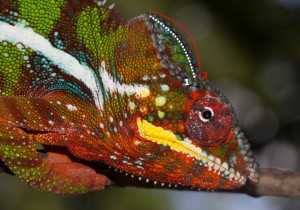
1: Normal muscle curvature in the helmet of Furcifer pardalis, the parietal crest is clearly visible
2: Here the muscles would be strongly fatty
As humans, we also regularly overestimate the feed requirements of our animals. It is often forgotten that our pets need much less food than we do simply because of their much smaller body size. Dogs, cats, and also reptiles with superfluous fat pads roll through life, which is mostly well-meant, but unfortunately bad for the animal. In general, chameleons don’t need as much food as mammals do: We need about 70% of the energy we consume to keep our body temperature at the same level. So 70% of the amount of food we eat as humans is only needed for our constant body temperature of 36 to 38°C. A reptile does not need this energy as an ectothermic animal. It runs to a warm place and warms up there. Chameleons, therefore, do not only need less food because of their much smaller body size but also because they do not have to maintain their body temperature at all.
In addition, chameleons move much more in the wild and over longer distances. They move in search of food, on the run from predators, or when looking for fellow chameleons willing to mate. Chameleons also spend more energy in nature than a chameleon kept in a terrarium.
But a chameleon, like a wild animal, eats everything it can get, even in captivity. In the terrarium, this leads to the animals eating significantly more than is good for them if food is always available. There is no “learning effect”. Thus, restrained, very limited feeding over the entire life of the chameleon is important.
Feed chameleons restrictively
Some basic rules for feeding chameleons:
- The offered food animals should always be smaller than the mouth width of the chameleon.
- Better to offer several small feeders than a single large one.
- Young animals up to the age of a few months should still have food available at all times, at the latest from the age of four to six months, however, the supply should be limited and days without food should be introduced.
- About 10 feeders of medium size per week per adult, medium-sized chameleon (corresponds for example to a panther chameleon) are sufficient.
- Adult chameleons should not be fed daily but only every few days.
- The aim should be to obtain the broadest possible spectrum of different feed animals.
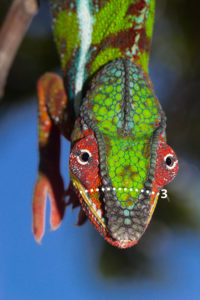
3: Width of the mouth of a panther chameleon, according to which the size of the feeder animal is selected.
The amount of food depends on the species of the chameleon. There are animals that get along very well with three or four large feeders per week, but there are also chameleons that need twenty insects per week. The need depends not only on the size, age, and movement of the chameleon but also on the temperatures in the terrarium. The warmer it is, the more food is needed. During cooler periods, some species even stop eating altogether.
Larvae and maggots (e.g. mealworms or zophobas) should always be removed from the menu or only fed extremely rarely. They are also not suitable for “feeding up food”. Mammals such as young mice or birds should also not be included in the feed plan. Even if some larger chameleon species in nature are able to shoot a small bird or a smaller fellow from time to time, this is not recommended for feeding in the terrarium. On the one hand, young mice, as well as birds, are overly nutritious and a heavy burden on the liver and kidneys. On the other hand, the chameleon is more likely to be injured when feeding vertebrates than insects. Last but not least, animal welfare aspects also have a negative effect on the feeding of live vertebrates to chameleons.
When feeding, many chameleons prefer winged food animals such as small moths or green cockroaches. But also flies (a food with enormously little nutritional value, which can therefore be offered more often) are very popular with many species. Basically many different feed animal species should be offered. In nature, chameleons feed on an enormous spectrum of different feed animals, including many mosquitoes, butterflies, beetles, and arachnids. A small (very small!) excerpt of the many different food animals on Madagascar can be found in the following photos and in this article.
How can you tell that a chameleon is too thin or too fat?
Chameleons do not store their fat under the skin as humans do – they have abdominal fat bodies. Thus, it is hardly possible to draw conclusions about their nutritional status on the basis of the external condition of the animals. It is perfectly normal for chameleons to be able to recognize ribs and hip bones. Even a completely overfed, extremely fat chameleon always has well visible ribs!
It is recommended to check the weight of the chameleon regularly. A chameleon that is much too fat can be recognized by its bulging helmet, “chubby cheeks”, stocky legs, and very round tail. In this case, the muscles are already fatty. However, fat is only stored in muscles when all other storage possibilities of the body have been exhausted. Such a chameleon is therefore already on its way to fatty liver, kidney damage, and thus a greatly shortened life expectancy. The myth that the helmet of a chameleon contains additional fat deposits is wrong! The helmet contains only chewing muscles. Chameleons that are regularly overfed and can make use of food animals without limits often stop eating for shorter or longer periods (caution: sick chameleons can also stop eating). This should not happen with a healthy, restrictively fed chameleon.
In some species, however, even an advanced stage of fat deposits in the muscles is hardly recognizable, for example in Calumma parsonii. In these animals, it is particularly important to feed them with restraint and to let them experience cold winter periods – all the more since this species is supposed to reach impressive sizes quickly in the eyes of many keepers. Many Parson’s lose the overfeeding at the age of only a few years with death, although they can reach 15 years and more with good husbandry.
A chameleon that is too thin is hardly recognizable, but usually no problem in terraristics. Overfed chameleons are much more common. Only in severely ill animals, no abdominal fat bodies (from which chameleons can feed for a long time) can be found in a section. Often sick animals also break down muscles, which can be recognized by the strongly protruding spine.

